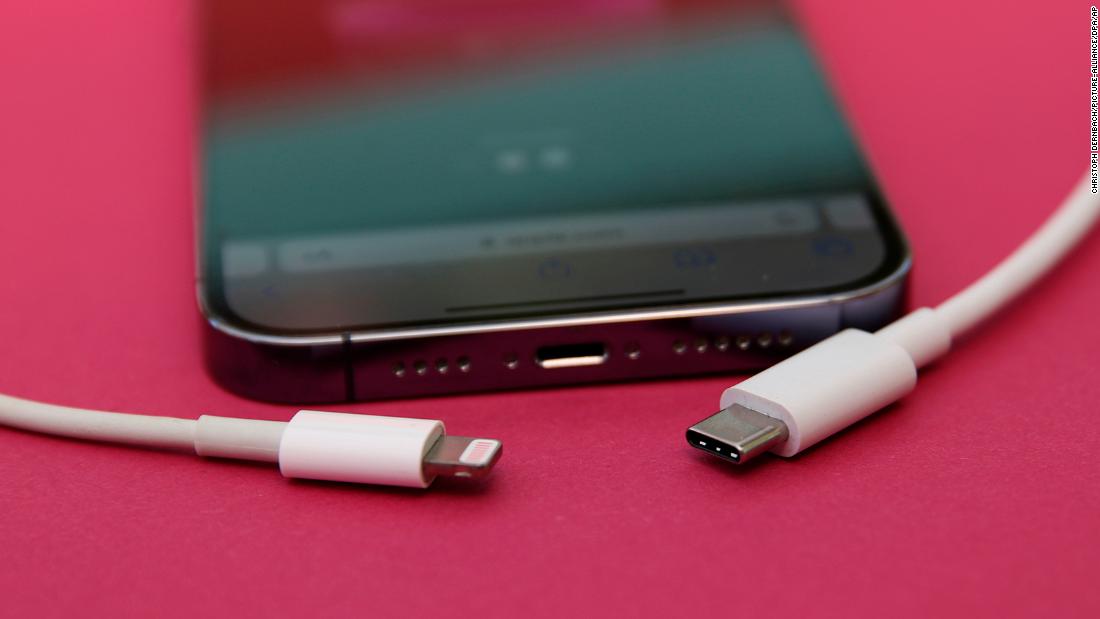(CNN) –– Apple has finally done away with its Lightning charging port: the iPhone 15 accepts a connector for chargers compatible with products the company doesn’t have. That means one less cable taking up space on your nightstand and you don’t have to worry when packing suitcases for travel.
However, the move — spurred by a European regulatory mandate passed last year — is largely symbolic, years after most other devices switched their charging ports to USB-C. And it won’t do much to reduce the mountains of e-waste piling up around the world.
“I would characterize the EU-Apple Act as an evolution, not a revolution,” said Marian Serto, a professor of industrial environmental management at the Yale School of Environment.
When the European Commission approved the move last year, it cited two reasons: First, everyone agrees that having so many cables around is very annoying. Second, a single charger for all devices (made by Apple, Samsung, Garmin or whoever) would “significantly reduce e-waste.”
Apple initially resisted because it made a lot of money selling extra Lightning cables. But he stressed that the futility argument is false and that the promise of wireless charging will only make the cable problem worse. (However, the company said it complies with the rules of a common cable.)
Removing the Lightning cable will, in the short term, lead to a surge in electronic waste as iPhone users toss their useless Lightning cables in drawers. (To be clear, not recommended. For an environmentally friendly option, you should try to find a local e-waste recycling center or Best Buy store.)
Overall, however, the impact of the global e-waste mountains will be minimal.
About 66 million tons of e-waste are generated each year, says Rudiger Kuhr, director of the Sustainable Cycles Program at the United Nations University. The charging cables, he said, represent “a few hundred thousand tonnes”.
“When we look at the net numbers, it’s nothing,” Kuhr said. “However, we believe this is a very important step in making people aware of the problem we are facing.”
E-waste is a growing problem that has yet to enter the public consciousness. Most of it ends up (in our cupboards and junk drawers), meaning more materials like copper, gold and platinum have to be mined to produce new products.
“You can make money doing it, but there are a lot of steps involved,” Kuhr says. “Compared to all the other waste streams, it doesn’t make sense to the consumer.”
Almost 80% of e-waste generated worldwide is not properly treated.
Whether the EU standard actually reduces waste could put pressure on Apple and other manufacturers to close the loop by making it easier to refurbish and recycle old products.
To its credit, Apple is “leading the way in extracting rare earth metals from its recycling pile to recover these precious materials,” Chertov says, adding that last year the company said it recycled more than two-thirds of its aluminum. i need “Today, waste experts consider “reuse” a better option than recycling because more can be recovered.”





:quality(85)/cloudfront-us-east-1.images.arcpublishing.com/infobae/KTKFKR763RBZ5BDQZJ36S5QUHM.jpg)